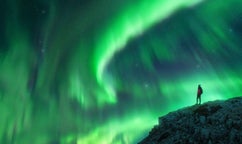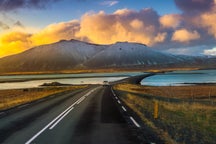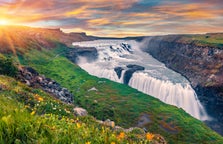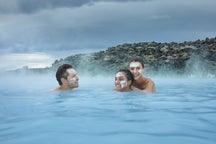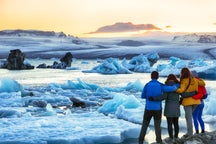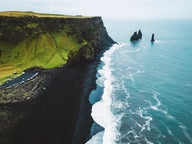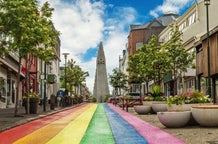Beschreibung
Zusammenfassung
Beschreibung
Sieh dir die klassischen Sehenswürdigkeiten des Goldenen Kreises an, besuche einige versteckte Juwelen und schnorchele auf dieser aufregenden Tagestour in kristallklarem Gletscherwasser. Diejenigen, die nach einer unterhaltsamen und einzigartigen Möglichkeit suchen, die isländische Natur und Geschichte kennenzulernen, sollten sich diese Tour nicht entgehen lassen.
Der Thingvellir-Nationalpark, das geothermische Gebiet rund um den großen Geysir und der Gullfoss-Wasserfall sind die drei natürlichen Attraktionen, aus denen sich der sogenannte Goldene Kreis zusammensetzt. Kein Reisender sollte es versäumen, diese wunderschönen Sehenswürdigkeiten zu besuchen.
Auf dieser Tour siehst du allerdings nicht nur die drei wichtigsten Sehenswürdigkeiten, sondern nimmst auch an einer aufregenden Schnorchel-Tour in der Silfra-Spalte des Nationalparks Thingvellir teil.
Die Tour beginnt mit der Abholung in Reykjavík, von wo aus du in den Nationalpark chauffiert wirst und direkt mit dem Schnorcheln startest. Nachdem du einen Trockenanzug und Schnorchelausrüstung sowie eine Einführung erhalten hast, geht es auf ins Abenteuer. Du gehst über eine Leiter ins kühle Nass und wirst mit Sicherheit vom blauen, kristallklaren Wasser begeistert sein.
Das durch Lavagestein gefilterte Gletscherwasser ist so klar, dass du eine Sichtweite von bis zu 100 Metern hast! Du schnorchelst hier wortwörtlich zwischen den Kontinenten, da die eurasische und nordamerikanische Kontinentalplatte bei Thingvellir auseinanderdriften und dadurch unter anderem diese Spalte entstanden ist.
Nach diesem einmaligen Erlebnis ist es an der Zeit, Thingvellir mit seinen wunderschönen Schluchten und Lavafeldern genauer zu erkunden. Thingvellir ist auch der Geburtsort des isländischen Parlaments, denn hier versammelten sich bereits die ersten Siedler, um die Gesetze des Landes festzulegen.
Von Thingvellir aus besuchst du das geothermische Gebiet von Geysir, wo du sprudelnde Schlammbecken, dampfend heiße Quellen sowie den mächtigen Geysir Strokkur siehst, der alle 5-10 Minuten ausbricht. Dann geht es zum atemberaubenden Wasserfall Gullfoss, wo du beobachten kannst, wie Gletscherwasser vom Langjökull-Gletscher über zwei Stufen in eine tiefe Schlucht stürzt.
Diese Tour führt dich auch zu Kerid, wo du einen aquamarinfarbenen See in einem Krater aus rotem Vulkangestein bestaunen kannst.
Kombiniere Sightseeing und Abenteuer mit dieser unterhaltsamen Tagestour. Reise in einer kleinen Gruppe zu einigen der besten Sehenswürdigkeiten Islands und kreiere Erinnerungen, die ein Leben lang anhalten. Am Ende dieser Tour erhältst du kostenlose digitale Fotos.
Überprüfe die Verfügbarkeit, indem du ein Datum auswählst.








